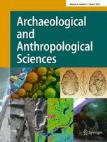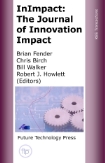Crop Centre in Print
Please find the latest journal publications from the Crop Centre listed below.
For a full list of publications from the School of Life Sciences please visit the Latest Journal Publications
A pangenome of an agronomically important crop plant Brassica oleracea

This paper, published in Nature Communications on 11 November 2016, highlights our involvement in the multinational Brassica community and illustrates how we are at the forefront of the application of novel molecular methods for improving crop breeding. Brassica oleracea remains one of the most important group of horticultural vegetables worldwide with significant economic value. It is also associated with major health benefits.
Changes in activity and structure of the soil microbial community after application of azoxystrobin or pirimicarb and an organic amendment to an agricultural soil
 Alba Alvarez-Martin, Sally L Hilton, Gary D Bending, M. Sonia Rodrguez-Cruz, M. Jesus Sanchez-Martin
Alba Alvarez-Martin, Sally L Hilton, Gary D Bending, M. Sonia Rodrguez-Cruz, M. Jesus Sanchez-Martin
Pesticides and organic amendments are widely used in agricultural soils, the former for pest control and to improve crop yield, and the latter to maintain soil quality and to mitigate pesticide leaching. Both amendments and pesticides can affect soil microbial communities, which may impact crop fitness. Therefore, the objective of the current study was to investigate the changes that occur to soil microbial communities following use of the low-cost organic residue spent mushroom substrate (SMS) as an amendment to an agricultural soil in combination with the widely used pesticides azoxystrobin or pirimicarb.
Ultraweak photon emissions from the seed coat in response to temperature and humidity – a potential mechanism for environmental signal transduction in the soil seed bank
 Footitt S, Palleschi S, Fazio E, Palomba R, Finch-Savage WE, Silvestroni L
Footitt S, Palleschi S, Fazio E, Palomba R, Finch-Savage WE, Silvestroni L
Seeds beneath the soil sense the changing environment to time germination and seedling emergence with the optimum time of year for survival. Environmental signals first impact with the seed at the seed coat. We hypothesize that beneath the soil surface the attenuation of light (virtual darkness: low background noise) enables seeds to exploit UPE for transducing key environmental variables in the soil (temperature, humidity and oxygen) to inform them of seasonal and local temperature patterns. Overall, seed coats were found to have potential as effective transducers of key fluctuating environmental variables in the soil.
Early identification of potato storage disease using an array of metal-oxide based gas sensors
 Massimo F Rutolo, Daciana Iliescu, John P Clarkson, James A Covington
Massimo F Rutolo, Daciana Iliescu, John P Clarkson, James A Covington
Soft rot is a widespread potato tuber disease that causes substantial losses each year to the UK potato industry. This work explored the possibility for the early detection and monitoring of this disease by means of gas sensing in a laboratory setting. The results showed discrimination between uninfected and diseased tubers following analysis of 40 potato tuber samples for each of the two time points with a commercial array of 12 MOX sensors (AlphaMOS Fox3000).
Postharvest Biology & Technology. June 2016
Agricultural change in Copper Age Croatia (ca. 4500–2500 cal B.C)?
 Kelly Reed
Kelly Reed
The Copper Age in the Carpathian Basin is marked by a distinct change in settlement patterns, material culture, social traditions and subsistence practices; however, few studies address the nature of crop cultivation in the region. This paper examines new archaeobotanical data from 13 Copper Age (ca. 4500–2500 cal BC) sites located in continental Croatia, in order to assess the extent to which crop agriculture may have changed and contributed to overall subsistence economies in the Copper Age.
Agricultural Innovation: Lessons from Medicine

Menary, Jonathan
Today, it is widely acknowledged that agriculture is at a crossroads. The need for greater productivity to cope with a growing population and changing consumer demands - coupled with the necessity that this be done sustainably by reducing pollution and greenhouse gas emissions - presents a number of challenges.
Inspired by the successes of the Green Revolution in the 20th century, which saw global cereal production double over the course of 30 years or so, greater levels of research-driven innovation have been promoted as offering a solution to these twin crises; yet this method is not without its own problems.
A number of publications in recent years have pointed to there being a failure to 'translate' the basic science conducted by agricultural and horticultural scientists into effective technologies 'on the ground'.
This paper considers what lessons the agricultural knowledge & innovation system (AKIS) can learn from medical research translation by reviewing recent literature on translational science and implementation. It is hoped that such a synthesis will contribute to agri-innovation policy formation in the UK.
